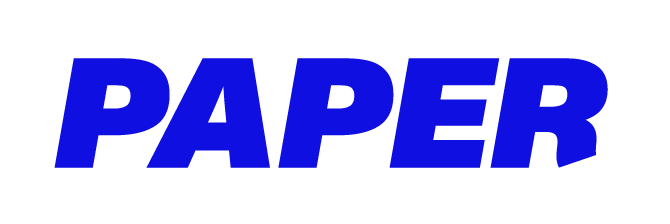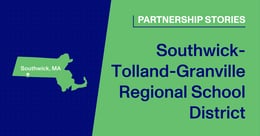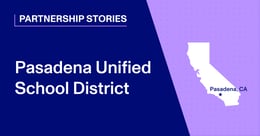
Setting the Stage for Success
How Strategic Planning is helping Visalia USD pilot GROW in their district
Visalia Unified School District (VUSD)—a public school district serving approximately 30,000 students in California’s Central Valley—has a very straightforward mission and vision statement: “Every student learning every day. Every student empowered to achieve future success.”
Delivering on that mission, however, is easier said than done. With a diverse population of students, many of whom are multiple grade levels behind in one or more subjects, and a nationwide teacher shortage, Visalia USD faces challenges that are familiar to districts across the country.
Aware of the benefits that high-impact tutoring (HIT) can provide, the leadership team at VUSD looked to GROW, Paper’s HIT offering, to help solve this seemingly intractable problem. With GROW, VUSD gets access to high-quality, remote tutors, who provide research-based, data-driven tutoring to students in an individual or small-group setting. By leveraging technology, VUSD can effectively extend its teaching teams without having to hire and train more staff.
“We knew that this type of tutoring was important, but equally important was, ‘Who do we partner with?’” says Kirk Shrum, Superintendent of VUSD. “We're grateful to have had a partnership with Paper already and knew the support we would be receiving.”
One Size Doesn’t Fit All
One of the underlying principles of HIT is that you need to meet students where they are and provide differentiated instruction. That idea–that nothing is one-size-fits-all when it comes to education–is something that VUSD had already embraced on a larger scale with the concept of Learning Lab Schools.
“The learning lab concept involves intentionally targeting school sites with innovative principals… having them build plans, and then us resourcing their plans so we can learn from them," says Mark Thompson, Assistant Superintendent, Learning & Leadership. “Our job is not to tell them what to do, but to learn from them and multiply the bright spots that they’re doing.”
With the learning lab concept in mind, Superintendent Shrum and his team wanted to empower some of the district's most innovative principals to weave GROW into their existing intervention programs, while providing them with the support they need to be successful.
Ultimately, the pilot is an opportunity to learn how best to scale the GROW program across the district, so to gather data VUSD leadership decided to pilot the program with 5th grade math at two very different elementary schools:
- Four-Creeks Elementary School. A site with broad academic deficits, Four-Creeks receives funding for instructional aides.
- Hurley Elementary School. Considered one of the district’s higher-performing schools–even though nearly 20-30% of students still need additional support–Hurley doesn’t receive funding for instructional aides.
Strategic Implementation
Four Creeks ES principal Lisa Majarian recognized how GROW could be a valuable tool in meeting student needs without putting additional strain on teachers. To that end, she wanted to try the program out in the context of their schools’ common intervention period, which had been implemented in the '23-’24 school year with great success.
For this common intervention period, students are organized around their academic levels. A dedicated intervention period three times per week ensures that every student gets regular small-group math instruction that’s on their skill level.
With the introduction of Paper’s GROW program, students were organized into three tiers:
- Expand. Students at or above grade level skill proficiency
- Grow. Students on the bubble of skill proficiency
- Rise. Students with beginning skill acquisition
While “Rise” and “Expand” students would meet with grade-level teachers in small groups of about 1:10, GROW students would meet with their assigned virtual tutors in small groups with ratios of 1:3. All small group lessons during this period would be aligned to the same standards and pacing guide with differentiation in presentation and knowledge gap focus.
Rolling out a successful HIT pilot is no small feat. Thankfully, Paper supplies a program designer to help facilitate program planning, logistics, and data reporting. The program designer collaborates closely with district leadership, school leadership, and classroom teachers to ensure a smooth implementation of the program.
“[Our program designer] has been very communicative with our team, consistently checking in. She’s easy to get in contact with,” says Thompson. “And the nice part is, she was a principal herself, so she understands what's going on and understands the intricacies of what a school site needs.”
Promising Results
It’s too early to provide definitive data about the success of the program, but preliminary data has been very encouraging.
“When I’m in here for GROW I hear students engaging that aren’t normally the students that are raising their hand during our math block… they’re building their confidence,” says Sheila Winton, 5th grade lead at Four Creeks Elementary. “I've never had this amount of students at the proficient level.”
For the educators at Hurley ES and Four Creeks ES, the definition of what success looks like after the GROW program goes beyond improved performance numbers on a standardized test. Their greatest hope is that every student will experience firsthand that practice and persistence really do pay off.
“I think success for me is that mindset around mathematics for my students,” says Majarian. “If my 5th graders come out of it feeling more confident as they enter into 6th grade, I think that that's going to be a success for me.”






